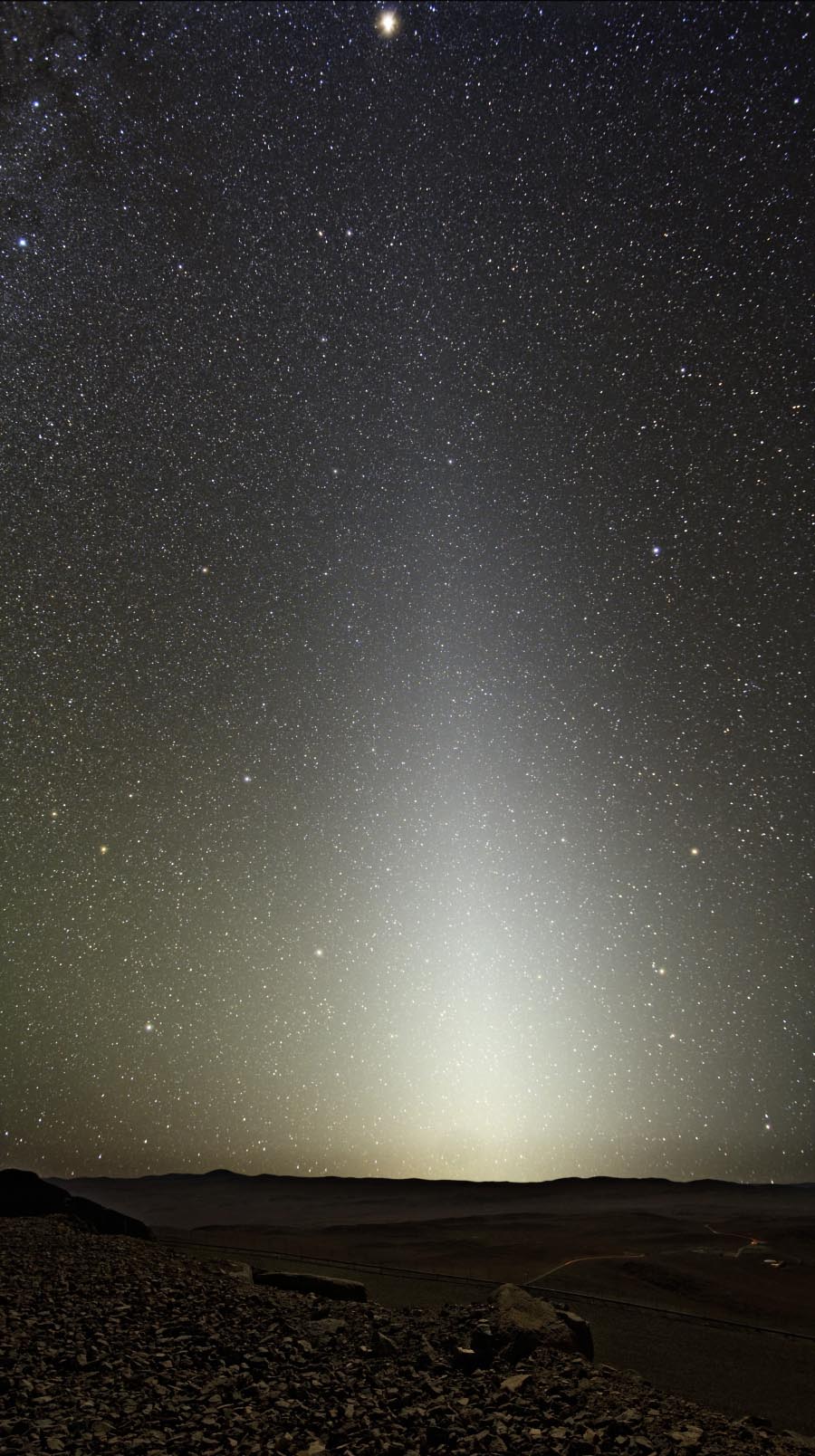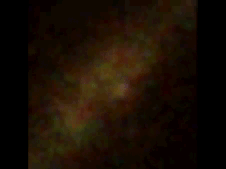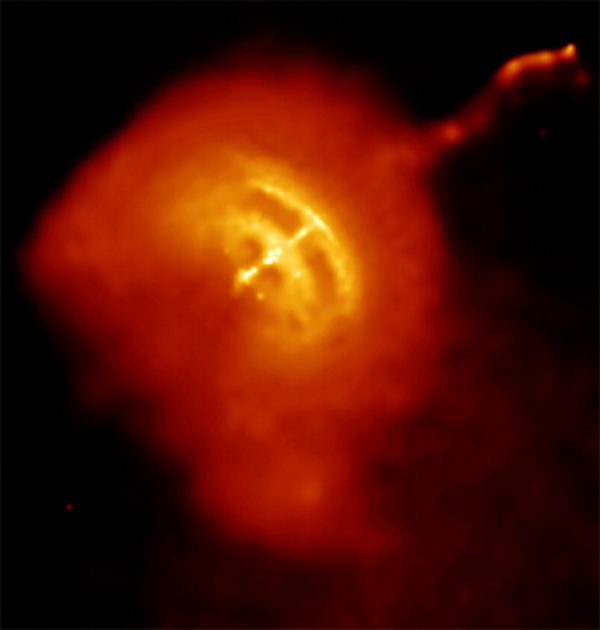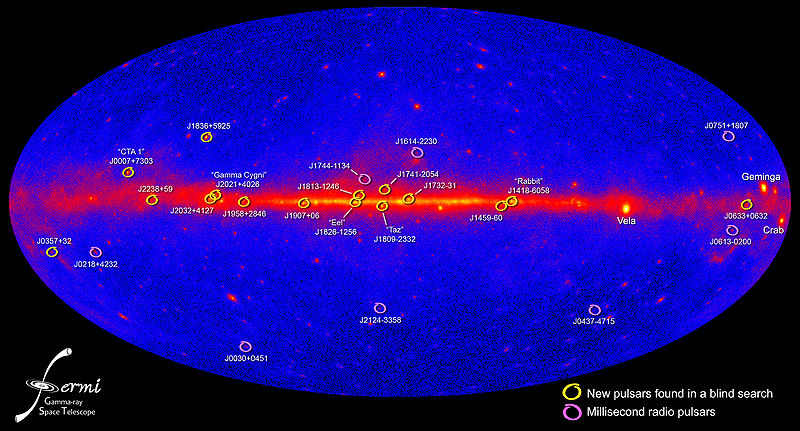 | |
|  |
|
|
| |
| Zodiacal light, pulsars, and magnetars again | Sep 14, 2011 2:56 AM PDT | url |
| | |
Added 1 new A* page:I haven't done one of these in a while, and today's page drawing went pretty smoothly (unlike, say, yesterday's--*shudder*), so here's a little animation of some steps it took in the process from really shaky storyboard (my secret shame: I never finished getting all the storyboards for this episode done, so I had to get back on that today; this was the first and it was a wee bit scratchy) to the finished art with three shading layers:

~~~~~~~~
I dunno if you watched all of the BBC video I linked yesterday showing their 2011 Astronomy Photographer of the Year contest winners, but it brought up some pretty interesting subjects that I just had to go look up!
I thought the zodiacal light photo was interesting: zodiacal light is a column of faint, very diffuse light sometimes visible in the night sky, mostly just after sunset or just before sunrise--it's due to sunlight scattering off cosmic dust in the interplanetary dust cloud, a disk of dust that extends well out past the orbit of Earth; although cosmic dust (including stardust, which is a specific type) mostly forms in the atmospheres of stars, because such dust can only float around the star for about 100 million years before it is thrown out of the system or merged into some larger body, all the dust currently in our solar system is "later generation" dust from comets, asteroids, and so forth. Here's a different photo of zodiacal light seen from Paranal, mountain site of the observatory by that name in Chile, with its famous Very Large Telescope:

image by ESO/Y.Beletsky (source)
And although it mostly looks like a column, "in fact, the zodiacal light covers the entire sky, being responsible for 60% of the total skylight on a moonless night." And here you thought it was all from stars!
The winning BBC photo of the Vela Supernova Remnant is also really neat; from a supernova that exploded around 12,000 years ago, at 800 light years it is one of the closest supernova remnants to Earth, and one of the brightest X-ray sources in the sky. There's a really nice photo of the whispy, bubbly, ghost-like remnant over here. But the reason it's one of the brightest X-ray sources is because the core of that supernova survived to become a neutron star, the Vela Pulsar.
The Vela Pulsar is historically significant because its connection, made in 1968, with the surrounding supernova fragment, provided the first real evidence that supernovae form neutron stars. It is called a pulsar because it still has a lot of rotational and electrical energy from the supernova, which has left it spinning rapidly; this forms a very powerful magnetic field that shoots material and particles from the poles of the neutron star's magnetic axis, which is offset from its rotational axis, so emitted beams carves very rapid paths across the heavens; the Earth happens to be in one of those paths, so we see high-energy emissions from it in a series of steady, rapid pulses--the Vela Pulsar is "the brightest persistent object in the high energy gamma ray sky," sending gamma rays our way, some of which (keep in mind these are individual photons) carry energy over one billion electron volts (those rank as third overall in terms of bright gamma ray sources in the sky); "for comparison, visible light has energies between two and three electron volts." Here's a nifty animation of Vela's gamma ray pulses:

image by Roger Romani (Stanford University) (Lead), Lucas Guillemot (CENBG), Francis Reddy (SPSYS) (source)
This Chandra X-ray image shows the superheated gas caught in the pulsar's electromagnetic vortex; it's shooting out along one of the jets in the upper right, but as you can see follows a twirling path down the length of the magnetic line, rather than moving straight:

image by NASA/CXC/PSU/G.Pavlov et al. (source)
Multiple Chandra images have been combined into a slow animation of the gas in that jet; globs of gas moving along the jet have been clocked at about 50% light speed!
Being that bright from 959 light years away, Vela is powerful, but the closest neutron star to Earth is the rather unfortunately named Geminga, which is 815 light years away. Geminga (the name is supposed to mean things in two languages, which was rather too clever as it sounds really silly in at least one of them) was born from a supernova 300,000 years ago, and that supernova may have been the event responsible for blowing the Local Bubble in which our Solar System resides: a 300-light-year cavity in which space is only about 10% as dense (averaging "0.05 atoms per cubic centimetre") as it is in the rest of the galaxy as a whole. Geminga might also have got a lot of velocity from the explosion, as it is zipping through space at about 205 kilometers per second (about 2/3rds of 0.1% of the speed of light)--which explains why the source of our 300-light-year bubble is now over 800 light years away (although if you do the straight math on that (205 km/s * 300,000 years) it would be more like 194 light years away from the source of its detonation, but I suppose it has probably slowed a bit, and the bubble and Earth for that matter are probably also moving in various directions relative to it anyway).
Pulsars gradually run down, losing their rotational energy and thus their magnetic jets after just 10 to 100 million years, which means that 99% of the neutron stars in the Milky Way have spun down to the point where they no longer pulsate.
Here's a neat map of the sky by the Fermi Gamma-ray Space Telescope showing the positions of the Vela and Geminga pulsars, among others:

image by NASA/DOE/Fermi LAT Collaboration (source)
And I am just going to mention another that *isn't* on there: SGR 1806-20 ("SGR" stands for "Soft Gamma Repeater"; its pulsar identifier on the map would have been "PSR J1808-2024"), a magnetar, which is a name used to identify neutron stars with particularly strong magnetic fields. I've talked about magnetars before; I'm just throwing SGR 1806-20 in here because speaking of those strong gamma rays coming from Vela, SGR 1806-20, which is way farther away--50,000 light years, on the far side of the Milky Way--is responsible for the brightest event every to come to Earth from outside our solar system:
On December 27, 2004, the radiation from an explosion on the surface of SGR 1806-20 reached Earth. In terms of gamma rays the burst was brighter than a full moon and had an absolute magnitude of around −291. It was the brightest event known to have been sighted on this planet from an origin outside our solar system. The gamma rays struck the ionosphere and created more ionization which briefly expanded the ionosphere. The magnetar released more energy in one-tenth of a second (1.3×1039 J) than our sun has released in 100,000 years (4×1026 W × 3.2×1012 s = 1.3×1039 J). Such a burst is thought to be the largest explosion observed by humans in the galaxy since the SN 1604 supernova observed by Johannes Kepler in 1604.
A similar blast within 3 parsecs (10 light years) of Earth would destroy the ozone layer and would be similar to a 12 kt of TNT (50 TJ) nuclear blast at 7.5 km. The nearest known magnetar to earth is 1E 1048.1-5937, located 9,000 light-years away in the constellation Carina. |
Dang! SGR 1806-20 is the most magnetic object known; it is "only" 20 kilometers (12 miles) across, but its magnetic field "is a quadrillion times stronger than that of the Earth."
|
·····
|
|
|
